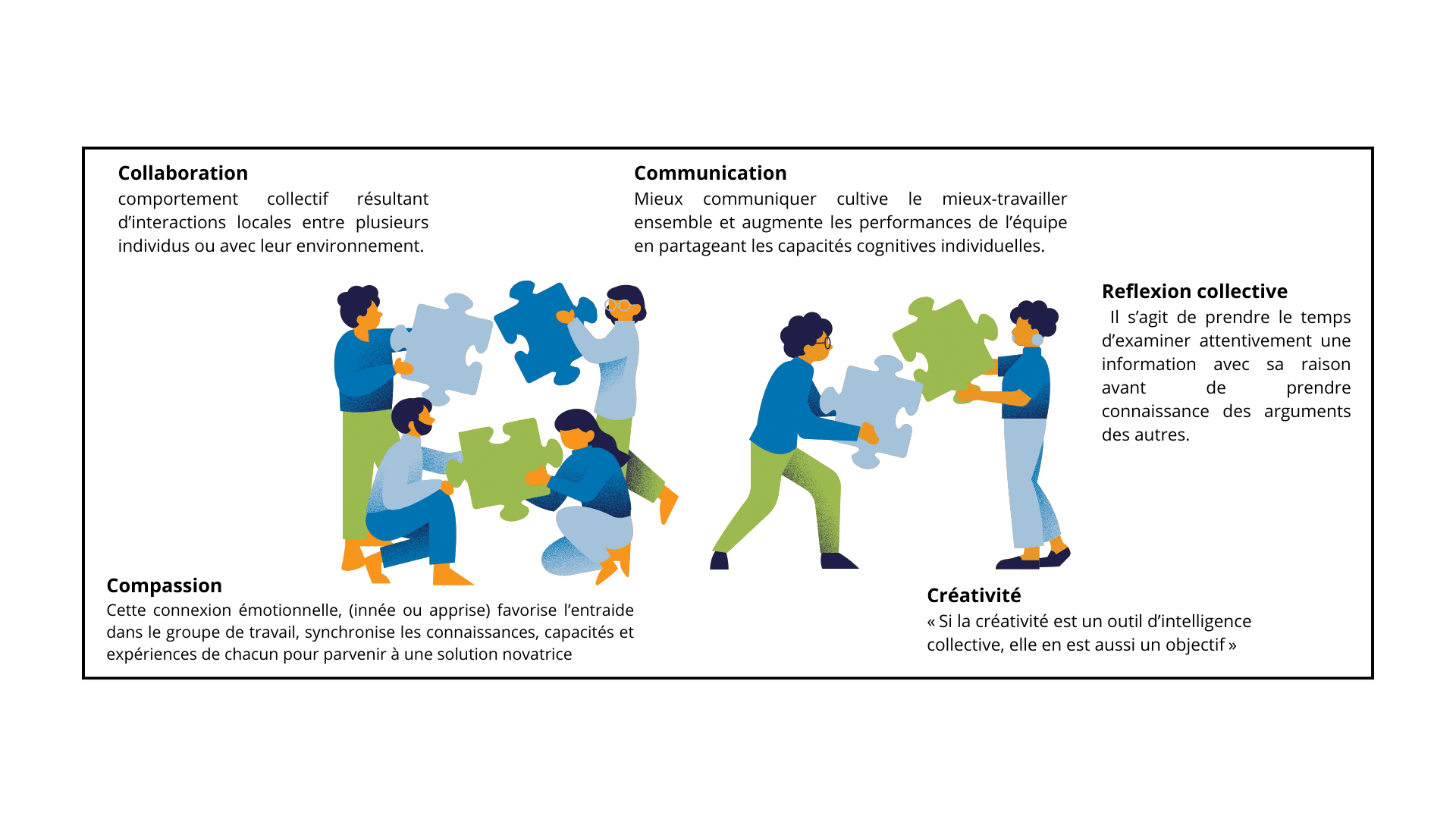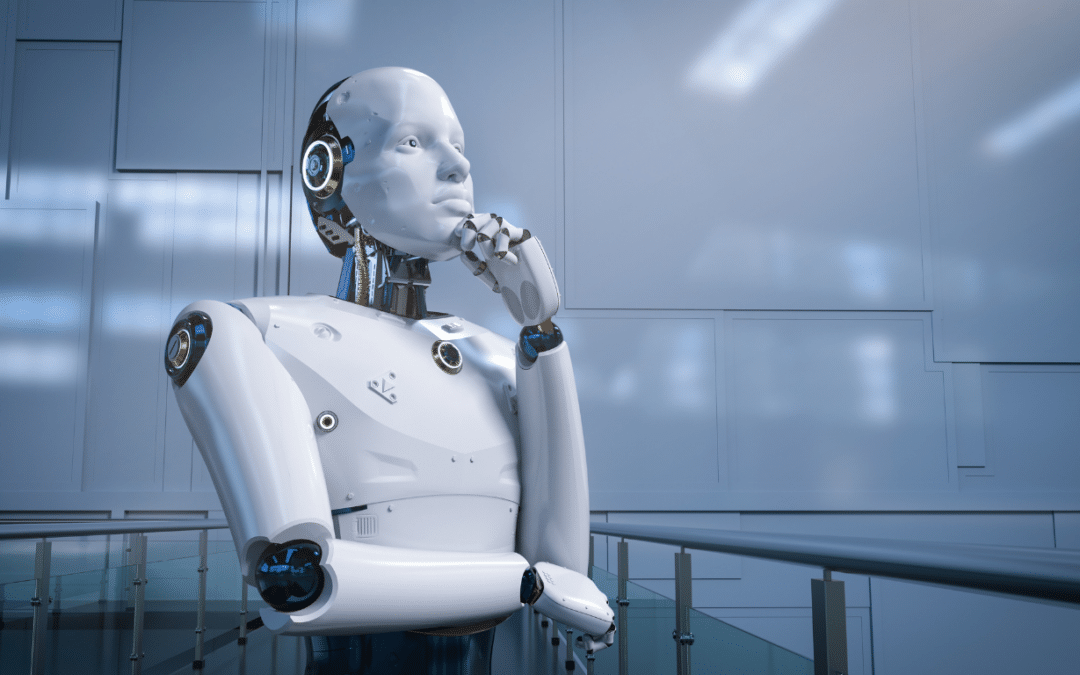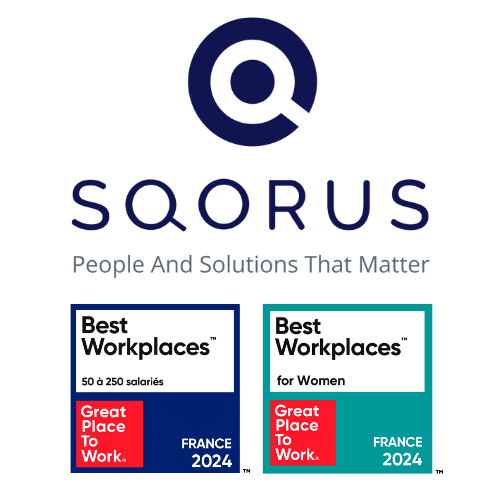As regulatory pressures intensify and the expectations of consumers, investors and employees evolve, companies are faced with an imperative to change. The question is no longer whether to transform, but how to do so effectively and sustainably. But how can they navigate this complexity and find effective solutions? This is where collective intelligence comes in, offering an innovative approach to navigating the complexity of environmental, social and economic issues.
In this article, we explore how collective intelligence can be the catalyst for a successful transition to more responsible and sustainable practices. We’ll see how it can help companies meet CSR challenges, rethink their business models and create value while reducing their environmental impact.
Current business context and challenges
In a world facing unprecedented environmental, social and economic challenges, the ability to adapt and respond to these issues has become an unavoidable priority. Climate change, the loss of biodiversity, and the degradation of ecosystems and societies call for rapid and effective responses from all economic players, especially businesses.
Regulatory pressures and the growing expectations of consumers, investors and employees are forcing companies to rethink their business models and operational practices as part of a more responsible strategy aimed at reducing the impact of their activities on the planet.
This approach, known as sustainable corporate transition, is embodied in Corporate Social Responsibility (CSR). Its implementation generates new economic and social challenges within organizations, often involving the whole of a company’s value chain and requiring the mobilization of human and material resources. Whether we’re talking about recycling, carbon emissions, business ethics or inclusiveness, these issues need to be analyzed at both the micro and macro levels of the corporate environment, in order to grasp all their implications and adapt practices accordingly, to make them more sustainable.
Finding solutions, yes! But is there such a thing as a single solution? No, there isn’t. There is no single solution. For each potential area of action, a multitude of solutions can be put in place to avoid, reduce or offset the impact of the company’s activities. The aim is therefore to have a diversity of visions (and the means to make them feasible) in order to determine which actions are the most coherent to implement according to the challenges facing the company and its environment. This is where collective intelligence comes into play.
Collective intelligence is 1+1 = 3
To make the concept of collective intelligence tangible, some compare it to the behavior of ants or bees. These insects collaborate around a common goal, illustrating how collective thinking can generate innovative solutions and drive change. We could go further and point out that, in a hive or anthill, each individual has well-defined skills and characteristics.
It is this synergy that creates the success of the collective: a sum of individualities that form a common and complete base of thought. Strictly speaking, collective intelligence is the ability of a group of people to work together to achieve a common goal.
Basically, the idea is that the combination of the diverse knowledge, skills and perspectives of the members of a group (pre-established or not) can produce results superior to those that an individual alone could achieve. This is the “1+1 = 3” concept introduced by Kenneth Blanchard in the 70s and 80s, who defended the idea that “none of us is as smart as all of us”.
Indeed, this diversity of individual strengths enriches the repertoire of potential solutions and creative approaches proposed by the group. Members work together, sharing ideas and information, and supporting each other to achieve a common goal.

To make collective intelligence a reality in an organization, we need to include these 5 c’s in our thinking processes, both in their strategic and operational aspects. Let’s take a closer look at this application:
- Creativity: brainstorming and maieutic workshops encourage inventiveness.
If everyone lends themselves to the game in complete confidence, supported by their colleagues, exchanges are facilitated and ideas emerge. The team gains access to the group’s creative unconscious, generates synergy, develops a high degree of motivation and ultimately achieves a higher level of performance and competitiveness. Gamification tools can also be used to present different topics from different angles, some of which may be original and playful.
- Compassion: empathy, active listening, sympathy and consideration for the emotions and opinions of others fuel group cooperation. By showing compassion for team members, managers model the process and give it credibility. Each member of staff naturally reproduces the same supportive, attentive and caring attitude with his or her colleagues.
- Collaboration: a wide range of tools are used to structure collective thinking. Their aim is to stimulate, encourage involvement and commitment, and open the way to creativity and innovation. Here, the manager’s role is to create the space-time and climate of trust needed to apply these tools. In such a working environment, tasks are assigned according to the abilities, skills and aptitudes of each individual, and even by the employees themselves.
Collaborative platforms can be used to facilitate exchanges and make information available.
To ensure the continuity of the spirit of cooperation, it is also necessary to keep a sense of the actions carried out. In other words: why do we do what we do? And why did we choose to do it this way?
- Communication: feedback and freedom of speech are major issues. According to Jeremy Lamri, Ph.D. in psychology, “self-criticism activates the prefrontal cortex”, thus reinforcing the ability to take action and make decisions. Employees are more daring in putting forward their arguments.
They communicate with conviction and intelligence, for the greater good of the team and the common goal.
- Collective reflection: giving your team the means to calm their analytical capacity enhances joint discussion and opens up new horizons for group reflection. The team moves forward enriched by a more enlightened and accurate point of view. They see the future from a different angle, and come up with innovative ideas for project management.
Is collective intelligence a good idea?
Collective intelligence sounds like a really good idea. Indeed, we have concrete examples of the use of collective intelligence that have led to major advances in the history of mankind. These include fields such as archaeology and space exploration, which transcend cultural or religious dictates in the service of greater goals.
In The Future of Work, Thomas Malone explores how the evolution of information technologies is transforming the way organizations function, by promoting more decentralized and autonomous structures, based on the principle of collective intelligence.
Companies can thus move from traditional hierarchical models to more flexible and collaborative ones, where power is distributed more widely among employees. Malone uses the example of Wikipedia, an emblematic model of collective intelligence, to illustrate how a decentralized organization can produce a product of comparable, if not superior, quality to that created by more traditional hierarchical organizations.
Wikipedia users collaborate to create and refine content, and although anyone can write or edit an article, community regulation mechanisms ensure the reliability of the information. This example shows how new technologies and massive collaboration can replace traditional models of knowledge production, offering a flexibility and responsiveness that centralized structures struggle to achieve.
And what about sustainable transition?
As mentioned in the introduction, the fundamental objective of organizations’ sustainable transition is to avoid, reduce or compensate for the environmental and societal impacts of their activities. This transition cannot be achieved by halves; it is therefore essential to have as complete a vision as possible of these impacts. A vision enriched by a wide range of expertise and analysis methods enables us to design solutions that are as effective as possible.
It requires the mobilization of all stakeholders, not only to take stock of the situation, but also to seek and implement solutions.
What’s more, the issues involved in this transition are often multi-dimensional and affect a wide range of stakeholders, making their inclusion in thought processes essential. History shows that pooling thinking between different stakeholders generally leads to positive results in the field of sustainability.
For example, in 2013, LEGO used an online collaboration platform to involve its customers in designing more sustainable products, which led to the development of innovative ecological solutions, such as the use of recycled materials in its products, solutions that might not have seen the light of day without this collective approach.
Moreover, the sustainable transition of an organization cannot be achieved without the involvement of its employees. CSR aims to bring about far-reaching changes in an organization’s practices, and cannot therefore be limited to a process of reflection shared vertically by a few.
It has to be thought through by those most concerned, otherwise the rules it induces risk not being respected.
It also underlines the importance of individuality within the company, by showing employees that they can actively contribute to the organization’s evolution, thus strengthening their commitment and attachment to it.
The article ” Collaborative Innovation for Sustainability: The Role of Collective Intelligence in Achieving the SDGs“, published in 2020 in Business Strategy and the Environment, shows how companies can mobilize collective intelligence to contribute to the Sustainable Development Goals (SDGs).
It highlights the importance of cross-sector collaboration and co-creation in developing sustainable solutions.
A concrete example is the partnership between Unilever, the NGO WWF, and local farmers to promote sustainable agricultural practices. Through collaboration and knowledge exchange between these stakeholders, methods have been developed to reduce the ecological footprint of agricultural production while improving farmers’ livelihoods. This example illustrates how collective intelligence, through cooperation between different sectors, can generate innovations that support the SDGs.
Sustainable development is a subject that concerns us all, to varying degrees, but which can unite us around major objectives, with collective intelligence being an essential lever for achieving them, or, on the contrary, an obstacle if poorly used.
The pitfalls of collective intelligence
Collective thinking is not without its faults. Indeed, groups can sometimes radicalize the opinions of their members, leading to extreme decisions rather than reasonable compromises.
It’s also worth noting that collective intelligence can fail if governance and deliberation mechanisms are not in place; they therefore need to be carefully structured according to the company’s objectives, organization and specific challenges.
The use of collective intelligence therefore requires meticulous upstream framing, which can also be costly in terms of resources. The idea of 1+1=3 presented earlier has also been called into question by some. Such is the case of James Shanteau, an American professor and psychologist specializing in corporate performance. He questions the concept’s fundamental idea that groups are systematically more intelligent than individuals. He points out that, in certain situations, group decisions can be biased by phenomena such as groupthink or the disproportionate influence of dominant members (also known as the “best member strategy”).
Finally, collective intelligence is more than just groupthink, as confirmed by the study ” Evidence for a Collective Intelligence Factor in the Performance of Human Groups ” (Science, 2010) by Anita Williams Woolley, Christopher F. Chabris, Alex Pentland, Nada Hashmi and Thomas W. Malone, which is one of the most influential on the subject.
The researchers found evidence of a collective intelligence factor that enables some groups to perform better than others. They discovered that collective performance depends not only on individual skills, but also on the way group members interact and on the structure chosen for brainstorming. It’s clear, then, that mobilizing collective intelligence within organizations promises definite benefits, but requires the risk-taking and rigor necessary to guarantee them.
Collective intelligence and CSR are intrinsically linked within the SQORUS group:
Adaptability, diversity of opinion, innovation – these are just a few of the concepts directly linked to the SQORUS DNA, and which are now being put to good use as part of the Group’s CSR commitment. Our team in charge of these issues is multi-disciplinary, and although the strategy is ultimately validated by the Executive Committee, it is thought out and objectified by the employees who, as a result, have a form of decision-making role in the Group’s strategic and operational orientations in this area.
But that’s not all. Indeed, collective intelligence was mobilized right from the start of the project, with a materiality exercise that took into account the vision of all our stakeholders, both internal and external.
For example, we asked our customers about their priorities in terms of social and societal impact, our suppliers about their concerns in terms of ethics, and our direct employees about their expectations in terms of environmental commitment. It’s a relatively costly exercise in terms of time and resources, but one that provides us with a map of the challenges facing the market on the one hand, and those facing our environment on the other. The aim is to put in place a CSR policy that can respond in a global but precise way to the challenges of our market as a whole.
This has enabled us, among other things, to anticipate certain concerns and take into account the full range of visions, thus avoiding a one-size-fits-all approach to CSR issues. The Group’s commitment has two faces: the first echoes the concerns of the market, responding to the expectations and demands of stakeholders and the regulatory framework.
The second is a response to the goal set by the founders: a commitment to individuals that goes beyond a simple commitment to employees. And to engage individuals, you have to take them into account.
That’s what we do at SQORUS: we take everyone into account. Our vision is that CSR is everyone’s business, and that it must be thought through and put into action by everyone and for everyone. Today, the group is capitalizing on this experience, and applying collective intelligence to create more responsible companies.
Our teams are ever more attentive to the specific features of each of the business ecosystems they come into contact with, constantly re-evaluating our practices and our use of collective intelligence, and inscribing our vision in a continuous improvement approach that we believe is intrinsically linked to the use of such practices.
If this article has inspired you to think about collective intelligence or CSR, don’t hesitate to contact us.
34 HR innovations and trends for 2025
Discover the latest HR innovations and trends and accelerate your digital transformation.
Contact
A project? A request?A question?
Contact us today and find out how we can work together to make your company’s digital future a reality.













